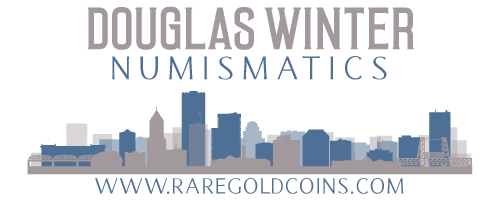Why Are Some Rare Coins Undervalued?
/Why are some coins clearly undervalued? I could answer this question existentially and say “because some have to be.” But the answer to this question is worth a little more exploration. Here are some things to consider about the valuations of coins. First and foremost, many of the areas of the rare coin market are thinly traded. In some cases, published prices for coins are speculative due to no examples having ever traded or they represent older price levels that have not been updated in many years. There are times when I am trying to figure what to bid for a very special rare coin at auction and I’m not sure I can scientifically pinpoint the exact price level. This can even be the case with coins that aren’t all that special but which haven’t traded in a long enough period of time to make their current value baffling.
Coin values are predicated by a supply and demand ratio. I have used this scenario enough times that it is now a semi-cliché but consider the following. If there are ten examples known of a certain coin but only three people care, it has an oversupply and its value is probably not very high despite its rarity. But if the same coin has thirty avid collectors than it will probably have a strong level of value.
This supply vs. demand situation is why some truly rare coins remain undervalued. As an example, look at a coin like the 1867 quarter eagle. Only 3,200 were struck and the most recent PCGS population figures show that just twenty-four have been graded. Despite this fact, the current value in AU55 is a whopping $1,500 or so. Shouldn’t this be a $3,000 or even a $5,000 coin? In theory, yes it should. But practical experience dictates that the level of demand for 1867 quarter eagles, which is virtually non-existent, keeps the price low. Advocates of the 1867 quarter eagle will counter with the argument “well, if this were an Indian quarter eagle with a population of twenty-four in all grades, it would be worth 10x in AU55.” In theory, this argument has merit. My counter-argument would be that the Indian Quarter Eagle series is many times more popular with collectors and that this is essentially an apples to oranges comparison.
The coin market is clearly becoming more and more researched-based as time goes by but I think the entire pricing system we have is antiquated. Let’s get back to the point I made in the second paragraph, about the market having thinly traded areas. These infrequently traded series are often compounded by a lack of good pricing information. I am always impressed by collector-dominated series like early Large Cents or Bust half dollars that have databases of pricing information available to collectors. The rare gold coin market doesn’t have this (yet) and I think it would be a real shot in the arm if someone were able to produce a price guide that helped dealers and collectors accurately determine values.
What I’d like to see even more is for an appearance-specific price guide to exist for these coins. Collectors of early Large Cents classify coins by three categories: choice, average and “scudzy.” Let’s say collectors are offered a certain die variety of 1796 Large Cent. A choice coin may be worth $5,000, an average coin $3,500 and a very low-end coin might only be worth $2,000. I’m not certain that these variations would be as extreme for, say, an 1854-C quarter eagle in slabbed AU55 but I do personally think a nice coin for the grade is already worth considerably more than an ugly one.
Getting back to my original point: why are certain coins undervalued? As I stated earlier, the major reason for this is that they are just not that popular. Another reason--one that is harder to give an explanation to--is that in any long series, it is inevitable that a percentage of the coins are “sleepers.” I previously mentioned that the lack of accurate pricing information in the market means that it is always going to be inevitable that a number of coins fall through the cracks. The value of being a specialist is that you will learn what coins are the sleepers before they become more widely known.











